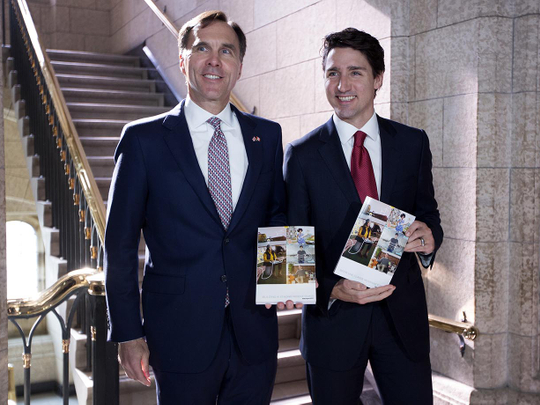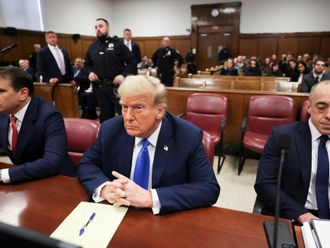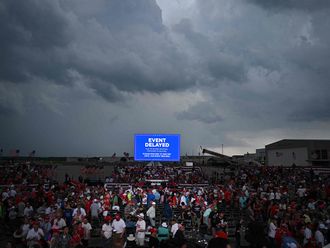
Ottawa: Canadian Prime Minister Justin Trudeau’s Liberal government put the brakes on its spending spree in the latest budget released Wednesday, as US policies and EU elections cast a haze over the global economic outlook.
The proposed budget limits new spending to $5.7 billion Canadian dollars (Dh15.7 billion) over six years — about 10 times less than the Liberals’ inaugural budget last year.
While the 2016 fiscal blueprint took Canada back into deficit to try to force an end to years of low growth, this latest budget keeps a tight rein on spending until a clearer picture of US policies and the future of Europe’s single market emerges.
The government did not unveil any big new initiatives in the document.
Rather Finance Minister Bill Morneau appeared content to tinker with the tax regime — consolidating tax credits and subsidies, closing loopholes, and earmarking small sums to study economic and social challenges.
“We’re taking a responsible approach to managing our economy,” Morneau told reporters. “We made sure that every dollar we spend will have an important impact on the economy.”
There are funds allocated for entrepreneurs, for example, to advance quantum technologies, to boost tourism, and for Canada to participate in NASA’s next Mars orbiter mission.
A consumer tax would be applied to ride sharing services such as Uber, while it would be removed from naloxone used to treat opioid drug overdoses, which have claimed thousands of lives across the country.
About Can$8.5 billion in military procurement that was earmarked for the next 20 years would be pushed to future years.
The government said it will make more federal land available for housing to help stem a housing crisis with prices in Toronto and Vancouver soaring beyond the reach of average Canadians. And it will develop a strategy to close the gender wage gap.
The Tory opposition in parliament, critical of the Trudeau administration for spending wildly and increasing debt while failing to put a dent in stagnating growth, filibustered to force a short delay in the budget announcement.
Under the government’s plan, the fiscal deficit would increase to Can$28.5 billion in fiscal 2017-2018, or 1.4 percent of the nation’s GDP.
The budget contains Can$330.2 billion in projected expenses and Can$304.7 billion in revenues for the year.
The federal debt is forecast to rise to Can$666 billion and keep going up, with no end in sight, rising to Can$757 billion in subsequent years.
Although Morneau renewed his assurances that a “debt-to-GDP decline over time is important to us,” the debt ratio is expected to remain flat at about 31 percent.
Meanwhile, last year’s spending boost appears so far to have had little impact on growth, which has been revised down for 2016 and the coming years.
Private sector economists forecast growth will peak at about 2.0 percent this year before slipping back and holding at 1.7 percent starting in 2018.
Economists cited risks due to “uncertainty around key elements of US economic, fiscal and trade policy,” which could restrain Canadian exports to its neighbor.
There also is a concern over Brexit and upcoming elections that could see anti-globalization parties unseat the liberal status quo in EU member states France and Germany.
Canada is counting on a new free trade deal with the EU to boost economic activity while it seeks to contain an expected “tweak” in its top trading relationship with the United States, which is worth Can$2 billion daily.
“For Canada, risks to the economic outlook are still highly contingent on the state of the world economy,” the government said.












